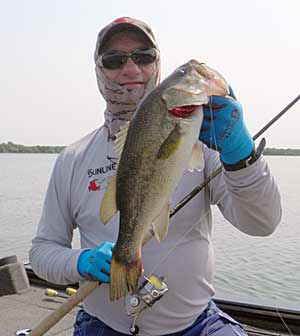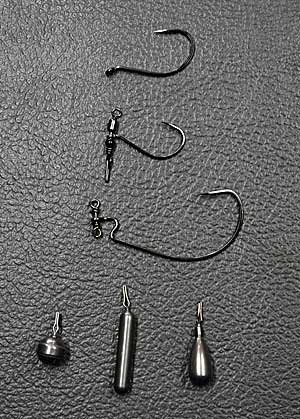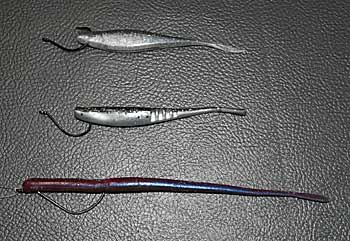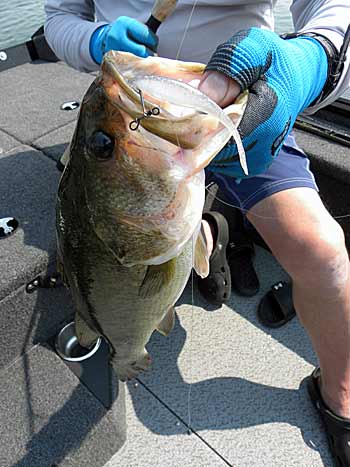
When it comes to bass fishing, many of the tactics we use were born and developed by fishermen in the U.S. But some have made their way across the big pond from Asia to land here on the West Coast. Drop shot fishing was developed first and used by saltwater fishermen before it caught on in Japan, where it went through some modifications before it showed up in the U.S.
I can recall Shin Fukae placing high in an FLW event with a drop shot. This was the first time I can remember learning about this new technique. But the most significant influence to propel drop shot fishing to the pinnacle of today came from Aaron Martens.
Aaron Martens took drop shot fishing to task. He was living on the West Coast, where many of the bodies of water are deep and clear, where drop shot tactics worked well and thrived. Aaron was the one to make drop shot fishing one of his specialties. In the mid-90s, Aaron created waves in tournament circuits with this new tactic.
At first, drop shot fishing was a tactic that was only used during the colder months to target hard-to-reach bass that suspended and wintered in deep water. With this new tactic, you could drop a bait down to the bass and hold your bait in front of them, triggering bites when other baits just traveled past without a reaction or even a look.
What put Aaron’s drop shot expertise on the map was his ability to transform this deep cold-water technique into a shallow-water weapon. He was the first to fish a drop shot in shallow to mid-depths of water all season long. If there were bass in an area, Aaron tried to figure out how to use a drop shot at getting bites. He knew the triggering factors of the drop shot and was one of the first to expand the basis of how the drop shot was used.
Let’s break down today’s drop shot rigging and tactics to help you put more bass in your boat all season long.
Rigging

When it comes to drop-shot fishing, it's important to note a few main things have changed throughout the years. Many anglers use a 7ft medium-light- to a medium-action spinning rod that is teamed with either a 200- to 300-size reel. Many anglers endorse the 300-size reel to reduce line twists when fishing a drop shot.
When it comes to line, it used to be fluorocarbon line in 6lb to 10lb size, with 8lb being the most common, but that has now changed. Braided line is now the line of choice. Braids' limited stretch gives you better sensitivity to feel light bites associated with drop shot fishing and better hook-setting power.
I recommend 12-14lb Sunline XPlasma Asegai for the line. You should add a fluorocarbon leader to the mix to reduce line visibility. I use Sunline FC leader material; I often start with 8lb test and adjust up or down according to fishing and bite conditions.
If I'm fishing in cover where I need to get the bass out of the weeds, I'll upsize my leader to either 10lb or 12lb as the weeds will help hide my leader. If I'm fishing open, clear water and the bass seem to be line shy, and I'm not generating many bites using 8lb test, I use 6lb.
Hook Choices
You have a few options for hooks. Match the drop shot hook you're using to the bait you're fishing. For example, if you're fishing a worm that you'll rig wacky style, use a traditional short shank drop shot hook. But if you want to rig your worm Texas-style, you'll have to use a longer shank hook.

Mid - Swivel Shot
Bottom- Swivel Worm Shot
Sinkers L to R Round, Finesse, Tear Drop
Gamakatsu has some lighter hooks that have keepers allowing you to rig your worm Texas-style but will also have enough holding power to get a solid hook into a big bass when called upon. When using traditional drop shot hooks, you're best to incorporate a swivel in your line system to help eliminate line twists.
Line twist is created when you bring your bait back to the boat. As you're reeling your bait to the surface for your next drop or pitch, the bait will start to twist as you're bringing it up. Do this through your day, and you'll end up with a badly twisted line that will start to cause other problems during your day of fishing.
I'll use a swivel most of the time to join my leader to my mainline. This helps eliminate a lot of the twists. But you'll have to be very conscious you don't reel this swivel into your rod tip eyelet.
Gamakatsu has also developed a product that will help you eliminate line twists when drop shot fishing called the Swivel Shot. This is a hook that Gamakatsu Pro Shin Fukea designed. The Swivel Shot comes equipped with a swivel built into the hook setup, so you don't have to use a separate swivel. You can use your traditional knot to tie your mainline and leader together, then tie the hook to your FC leader.
On the bottom part of the swivel is a clip so that you can put your dropper line on. This is an excellent choice as it allows you to adjust your dropper line length on the fly when trying to dial in your setup.
The Swivel Shot gives you two hook styles to work with. If you want to use a traditional drop shot hook, you will choose the Swivel Shot. This is the hooking choice if you want to nose hook your bait or if you would like to rig your wacky bait style.
If you want to rig your bait Texas-style, you can choose the Swivel Worm Shot. This setup comes with a worm hook equipped with a keeper to keep your worm locked in place.
Bait Selection
When it comes to bait choices, you have a lot of baits to pick from. Try to match your bait to the conditions you're fishing or the baitfish you're trying to imitate. In the same case, I push some of my color limits when picking drop shot baits to get them noticed. I use more chartreuse-colored accent baits than I usually do with other bait riggings. If the bait I choose doesn't have accents, I can add color with dyes to make the bait stand out more. The dye also adds scent at the same time.

Mid - Big Bite Baits 3.75" Jointed Jerk Minnow
Bottom - Power Shot Big Bite Baits Shaky Squirrel Worm
My reasoning is I'm not moving the bait as far when fishing a drop shot as I do with other traditional fishing presentations. I'm hoping to get the bass to key in on my bait from a distance to come to see what the bait is.
Another consideration when picking baits is the cover that you're fishing. Am I fishing in the weeds, above the weeds, open water rocks? This will all influence my bait choices. Some of this will come with experience, and some will just be learned by trial and error.
A few of my go-to drop shot baits are Big Bites 3.75” Jointed Jerk Minnow. I would label this as my #1 drop shot choice. Following that would be a Smallie Smasher or 4” Fluke style bait and a Shaky Squirrel.
You will have to try a few different options for rigging. There are three main rigging types when it comes to drop shot rigging. 1) Nose hook, 2) Hook point, 3) Texas rig.
Keep your rigging options open and let the bass tell you what they want, as each rigging will give your bait a different look and action.
Dropper Line And Weight Options
The Dropper line is the line you have under your hook with the sinker. Through the season, you'll need to adjust the length of this dropper line. You will want to shorten your dropper length to about 2” to 3” in colder water conditions. You will need to get your bait up off the bottom in warmer water conditions. It's not uncommon to use a dropper length anywhere from 12” to 18” off the bottom.
To determine dropper lengths, I'll use my electronics to help give me an idea of the length I should use. If I see the fish up off the bottom, I'll use this as a clue to the length of my dropper line. Remember to add a few more inches to this length to get your bait above the bass, not at the same level of the bass to trigger bites.
Weight choice for drop shot fishing is just like picking weights for Texas rig fishing. I'll use lead drop shot sinkers for fishing in weeds, but I'll use tungsten for fishing rocks. I get a better feel from the tungsten weights.

You also have three different sinker shapes to choose from. I mainly purchase and use teardrop-shaped weights as I feel these are the best all-around sinker. The other two sinker shapes are round and finesse weights.
Power Shot
I have been using a drop shot setup that some refer to as a power shot. This is a drop shot on steroids. The power shot is rigged and fished on a baitcaster setup.
I use a 7ft medium-action rod that is teamed with a baitcaster reel spooled with 10lb to 12lb fluorocarbon line. I use 12lb Sunline Assassin FC. When it comes to rigging, you have a few different choices you can use. I opt for a Gamakatsu Swivel Worm Shot to help eliminate line twists. My main reason for this is to Texas rig my worm as I'll fish this presentation more on weed edges than open areas. When it comes to sinkers, I use two sizes 1/4oz to 3/8oz standard bell sinker.
Dropper leg length is critical as you're fishing this drop shot more on a horizontal plane than on a vertical plane, so increase your dropper length to about 18”-20”.
When you're set up and have your bait rigged, make your cast. I work the bait like I would if I was fishing a Carolina rig. Make and keep constant contact with the bottom as you move your bait.
I hope these drop shot points help you get more bass in your boat. This is why many bass fishermen consider drop shot fishing the number one finesse tactic out there. It can catch bass when other tactics fail to put bass over the side of your boat.
BassResource may receive a portion of revenues if you purchase using a link above.




